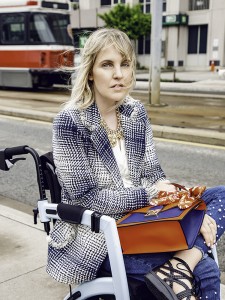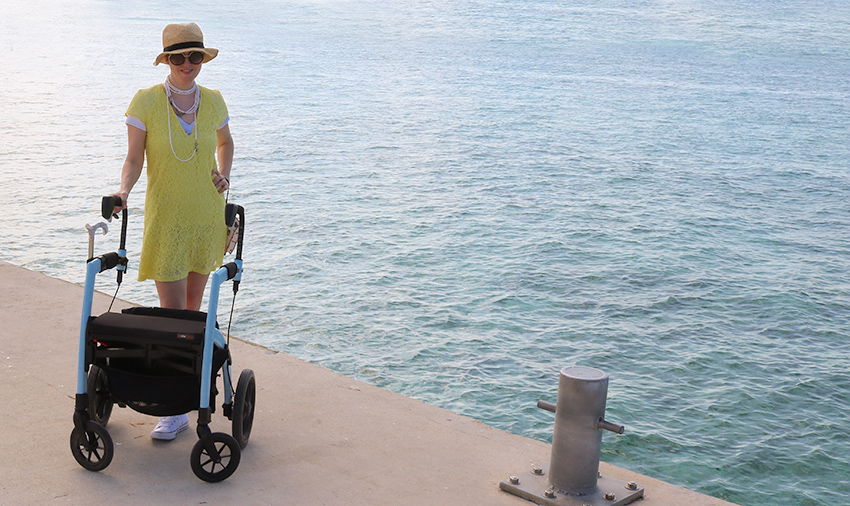I’ve had multiple sclerosis (MS) for 20 years, and for too long I was terrified of the prospect of “ending up” in a wheelchair. MS is a vicious disease, but I’ve learned that mobility aids are not the enemy I once believed them to be.
There’s no roadmap to the confusing landscape of mobility aids, and many of us are left to figure out what devices we need on our own. Before I needed a cane, a rollator, and sometimes a wheelchair, I only had negative things to believe about what using mobility aids would say about me.
As my MS progressed and my walking became weaker and slower, I thought my worst fears were realised when it came time to start exploring the intimidating world of mobility aids.
Stigma, lack of guidance, and a belief that all mobility aids were medical-looking and devoid of style were the biggest barriers keeping me from embracing the tools I’d eventually come to appreciate.
 With a heavy heart I ventured to the medical supply shop in search of my first rollator. To my surprise, I discovered the Rollz Motion – a rollator that converts to a transport chair. It seemed to be designed for someone with multiple sclerosis who can walk, but who, when fatigued, would benefit from sitting and being pushed.
With a heavy heart I ventured to the medical supply shop in search of my first rollator. To my surprise, I discovered the Rollz Motion – a rollator that converts to a transport chair. It seemed to be designed for someone with multiple sclerosis who can walk, but who, when fatigued, would benefit from sitting and being pushed.
I had no idea such a brilliant device existed. I was excited by the functionality of it, but most impressed by its aesthetic. This device looked more sporty than medical, and came in a cool, ice-blue colour. This was a mobility aid I could feel good about.
I first invested in a Rollz Motion for travel, but quickly found myself using it for all kinds of activities. I used it as a rollator to walk my dog, and as a rollator/transport chair for longer days shopping or visiting a museum.
Last summer I upgraded to the Rollz Motion Performance and, for the first time in years, my husband and I were able to go on hiking trails together. The ‘off-road’ pneumatic tyres of the Rollz Motion Performance have opened up more difficult terrain to me. When the pandemic is over, I can’t wait to visit Paris and its beautiful cobblestoned streets, something that would be less comfortable to walk across without air tyres.
Before my MS progressed, I didn’t understand the concept of ‘different aids for different days’. Sometimes I need a cane, sometimes a rollator; sometimes I need to be off my feet entirely. It seems obvious now, but I didn’t know I could be an ambulatory wheelchair user.
Even if someday, I do need a wheelchair full-time, I realise that wheelchair use is not the end. Far from it. Mobility aids don’t limit us, they liberate us.
It’s okay to grieve and feel sad when multiple sclerosis changes how we move, but no matter which mobility aid we choose, we shouldn’t feel ashamed or stigmatised by the tools that help us live. MS might slow me down, but I won’t be stopped. I’m thankful for the devices that look great and keep me moving.
This blog post was written by Ardra Shephard, the influential Canadian blogger behind the award-winning Tripping On Air.
